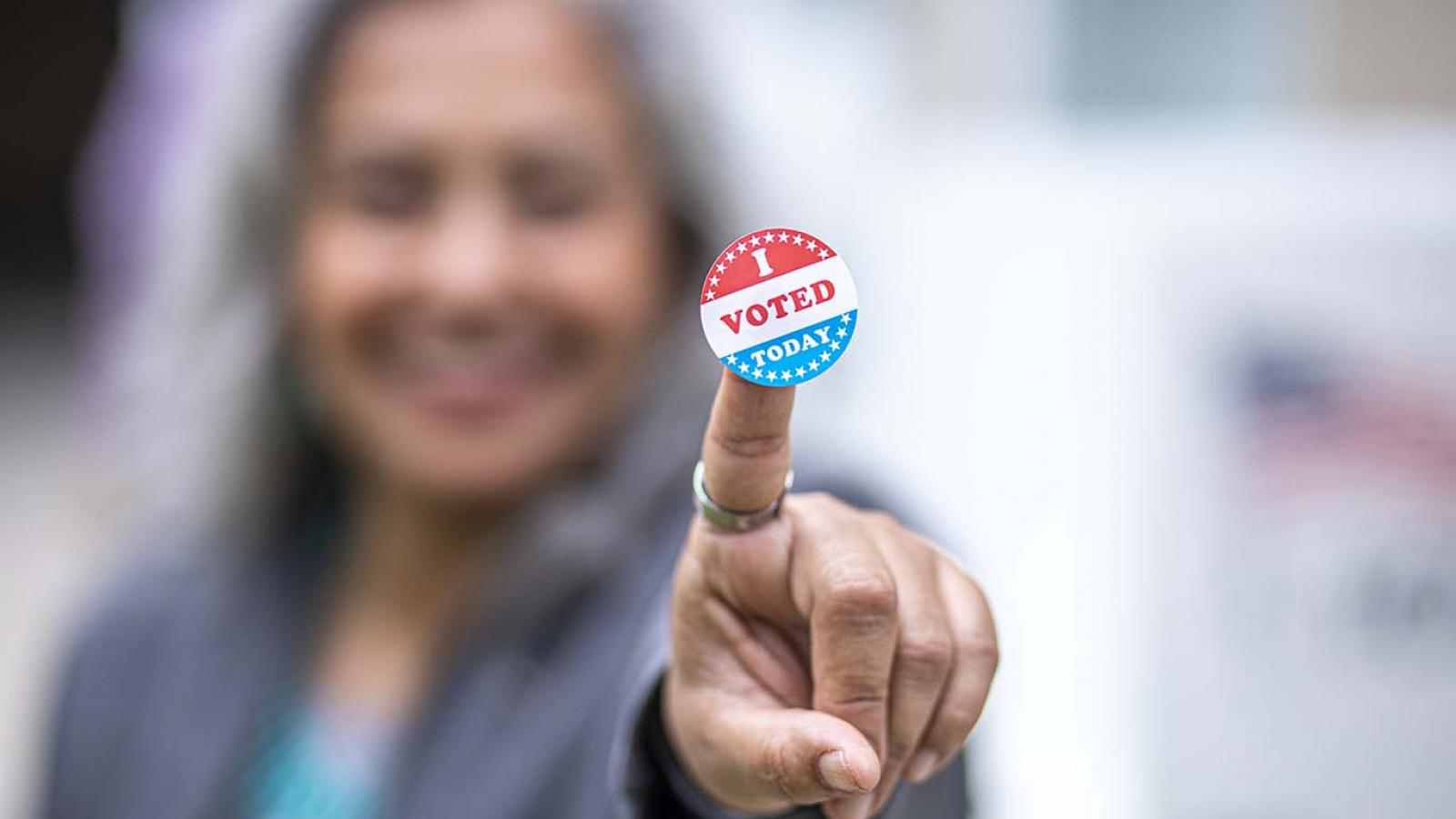With more than 32 million Latinos eligible to vote in the U.S., this group may be one of the most coveted voting blocs this election year. But what motivates this wide-ranging group to turn out to vote? Can it even be treated as a single, monolithic group?
Professor Miguel Tinker Salas, an expert in Latinos in the U.S., takes a closer look at the largest ethnic group of voters in this upcoming presidential election. He dispels some assumptions about Latinos being single-issue voters focused on immigration and delves into the history of why there are vast differences among this group.
Tinker Salas, a professor of history and Chicano/a and Latino/a studies, is one of the foremost authorities on Venezuelan political and social issues. His research expertise includes contemporary Latin America, as well as Latinos/as in the U.S. He is a frequent contributor to news media outlets such as Univision and Telemundo.
How much influence does the Latino vote have in U.S. politics?
As the largest ethnic group in the U.S., can Latino voters be the decisive factor in the upcoming presidential election? In five states where Latinos make up a significant percentage of the population – California, New York, Texas, Florida and Arizona – their votes have already shifted the balance of power. In 2020, with a population that has surpassed 61 million, (18% of the U.S. population), and with over 32 million Latinos/as eligible to vote, on the surface, their numbers would appear to bear out this assertion.
How diverse are Latino voters in the U.S.?
Once you push beyond the numbers, things become more complicated, and outcomes more difficult to predict. First and foremost, the Latino population is not a monolith; numbers alone fail to capture the complex dynamics of the group or tell us how they would vote. Differences within the population span the gamut and include factors unique to Latinos such as national origin, generational cohort, and their immigrant experience, or more common fissures found within the general population and that reflect religious affiliation, social class, gender and even race and racial identity.
A pan-ethnic Latino/a identity remains an elusive goal. With few exceptions, persons that trace their roots to Mexico or Central America do not share the same historical experiences as people from Cuba or Puerto Rico or the more recent South American emigres. The sounds and rhythms of the Cuban rumba, the Puerto Rican bomba, the Mexican ranchera, or the Salvadorian cumbia speak to very different historical, social, and even racial experiences. Even among Latinos from the same region of the Caribbean, there are drastic differences. Latinos from Puerto Rico are the product of a colonial relation with the U.S.; Cubans are still viewed within the framework of the Cold War; and Haitians continue to face a legacy of racism and exclusion.
What issues are important to Latino voters?
To envision Latinos as a single category that will vote as a monolithic “ethnic block” fails to grasp their historical trajectory in the U.S. Moreover, it creates expectations that are not applied to other segments of the population, serving to reinforce stereotypes about Latinos, when actual outcomes do not align with people’s misconceptions. Likewise, to reduce the population to a single issue, typically immigration, does not grasp that Latinos are equally concerned with matter of employment, equitable pay, quality education, affordable health care, accessible housing and the impact of environmental racism since they regularly confront these issues. Latinos and African Americans that work in key industries that provide basic services are classified as “essential workers” and have borne the brunt of the economic collapse and the current pandemic. In fact, according to the Pew Research Center (Sept. 11, 2020), when asked, Latinos listed the economy, healthcare, racial and ethnic inequality and COVID-19 as their top four concerns.
How can a party earn the Latino vote?
Typically, as an election cycle nears, political parties start to pay attention to Latinos. However, Latino initiatives have historically been underfunded and underrepresented in presidential campaigns. As Chuck Rocha, who led Bernie Sanders’s successful Latino campaign points out, one mistake many make is assigning Latino/a matters to an outreach director, instead of being part of the central decision-making process of the campaign. This approach further marginalizes their concerns as “special interests” and hampers serious efforts to address their concerns.
How will Latinos vote in the presidential election?
The Latino vote should not be assumed; it has to be earned by any party. That said, Democrats, representing over 50% of registered Latinos, promote a broader social agenda and claim to speak to the interests of the largely working-class constituency and an expanding middle class. Republicans, representing about one-third of Latinos voters, typically seek to align with political conservative elements in the community, the growing number of evangelicals and small business owners.
With good reason, many Latinos are fatigued by the empty promises of the past. They are frustrated with being taken for granted, or being scapegoated by unscrupulous politicians that blame them for the social ills of the nation. They fear a repeat of the past, where the Obama administration promised immigration and social reforms, and instead resorted to large-scale deportation campaigns that aggravated ethnic and racial conditions for citizens, documented and undocumented Latinos alike. Winning the Latino vote typically implies winning the hearts and minds and mobilizing those that do not trust either party. Despite past treatment, Latinos will likely vote in unprecedented numbers in the 2020 election. The polarizing nature of the campaign, and the devastating effects of the economy, and current pandemic that disproportionately affect the Latino population will undoubtedly increase turnout in the 2020 election.
